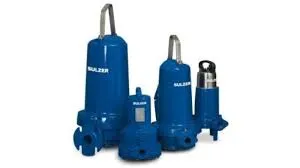kazakh
- Afrikaans
- Albanian
- Amharic
- Arabic
- Armenian
- Azerbaijani
- Basque
- Belarusian
- Bengali
- Bosnian
- Bulgarian
- Catalan
- Cebuano
- Corsican
- Croatian
- Czech
- Danish
- Dutch
- English
- Esperanto
- Estonian
- Finnish
- French
- Frisian
- Galician
- Georgian
- German
- Greek
- Gujarati
- Haitian Creole
- hausa
- hawaiian
- Hebrew
- Hindi
- Miao
- Hungarian
- Icelandic
- igbo
- Indonesian
- irish
- Italian
- Japanese
- Javanese
- Kannada
- kazakh
- Khmer
- Rwandese
- Korean
- Kurdish
- Kyrgyz
- Lao
- Latin
- Latvian
- Lithuanian
- Luxembourgish
- Macedonian
- Malgashi
- Malay
- Malayalam
- Maltese
- Maori
- Marathi
- Mongolian
- Myanmar
- Nepali
- Norwegian
- Norwegian
- Occitan
- Pashto
- Persian
- Polish
- Portuguese
- Punjabi
- Romanian
- Russian
- Samoan
- Scottish Gaelic
- Serbian
- Sesotho
- Shona
- Sindhi
- Sinhala
- Slovak
- Slovenian
- Somali
- Spanish
- Sundanese
- Swahili
- Swedish
- Tagalog
- Tajik
- Tamil
- Tatar
- Telugu
- Thai
- Turkish
- Turkmen
- Ukrainian
- Urdu
- Uighur
- Uzbek
- Vietnamese
- Welsh
- Bantu
- Yiddish
- Yoruba
- Zulu
Telephone: +86 13120555503
Email: frank@cypump.com
Жел . 14, 2024 13:23 Back to list
Efficient Solutions for Septic System Transfer Pump Installation and Maintenance Techniques
Understanding Septic Transfer Pumps A Comprehensive Guide
Septic systems play a crucial role in managing waste in areas lacking centralized sewage treatment facilities. At the heart of many of these systems is the septic transfer pump, an essential component that ensures the efficient and effective movement of wastewater. This article explores the significance, functionality, and maintenance of septic transfer pumps, shedding light on their role in maintaining sanitary conditions and environmental health.
What is a Septic Transfer Pump?
A septic transfer pump is designed to transport wastewater from a septic tank to a drain field or another treatment system. Unlike gravity-fed systems that rely solely on slope and elevation, septic transfer pumps provide the necessary force to move waste over significant distances or to higher elevations. They are particularly useful in situations where natural drainage is inadequate.
How Does a Septic Transfer Pump Work?
The operation of a septic transfer pump is relatively straightforward. Inside the septic tank, wastewater accumulates, along with various solids. When the level of liquid in the tank rises to a predetermined point, the pump activates, drawing the wastewater into its chamber. Once the waste is collected, the pump pushes it through the discharge pipe to the designated treatment area or drain field.
Most septic transfer pumps are submersible, meaning they are placed below the surface of the wastewater in the tank. This position allows them to efficiently manage the liquid without the need for external pumping mechanisms. The pumps are built to withstand exposure to corrosive elements often found in septic systems, ensuring reliable performance over time.
Importance of Septic Transfer Pumps
The primary function of a septic transfer pump is to prevent the overflow of wastewater, which can lead to severe health risks and environmental damage. When a septic system cannot handle the volume of waste due to factors such as heavy rainfall or an increase in water usage, the pump kicks in to manage the excess load.
septic transfer pump

Furthermore, timely transport of wastewater ensures that treatment mechanisms work efficiently. If wastewater remains stagnant in a tank, it can lead to unpleasant odors, the growth of harmful bacteria, and potential system failures. With a decent septic transfer pump in place, homeowners can maintain peace of mind knowing that their wastewater is being handled correctly.
Maintenance of Septic Transfer Pumps
Regular maintenance of septic transfer pumps is crucial to ensure their longevity and efficiency. Homeowners should inspect the system periodically, checking for clogs, leaks, or mechanical failures. A typical preventive maintenance routine may include the following steps
1. Regular Inspections Check the pump, float switch, and electrical connections to ensure everything is functioning properly. 2. Cleaning Remove any debris or sludge buildup inside the tank that could hinder the pump's performance.
3. Test the Pump Activate the pump manually to check for operational issues and to familiarize yourself with its functioning.
4. Professional Help Engage the services of a professional septic technician for deeper inspections and servicing, ideally every three to five years.
Conclusion
In summary, septic transfer pumps are vital components of modern septic systems, assisting homeowners in managing wastewater efficiently. Their functionality not only prevents environmental hazards but also promotes the effective treatment of waste materials. By understanding how these pumps work and committing to regular maintenance, homeowners can ensure that their septic systems remain reliable and effective for years to come. Proper care of these systems contributes to a cleaner, safer environment and enhances public health, making septic transfer pumps an indispensable part of wastewater management.
-
High-Performance Air Pumps for Sand & Gravel | Efficient Transport
NewsAug.03,2025
-
ISG Series Vertical Pipeline Pump - Chi Yuan Pumps Co., LTD.|Energy Efficiency, Corrosion Resistance
NewsAug.03,2025
-
ISG Series Pipeline Pump - Chi Yuan Pumps | Energy Efficiency&Compact Design
NewsAug.03,2025
-
ISG Series Vertical Pipeline Pump - Chi Yuan Pumps Co., LTD.|High Efficiency, Low Noise, Durable
NewsAug.02,2025
-
ISG Series Vertical Pipeline Pump - Chi Yuan Pumps | High Efficiency, Low Noise
NewsAug.02,2025
-
ISG Series Vertical Pipeline Pump- Chi Yuan Pumps Co., LTD.|High Efficiency&Compact Design
NewsAug.02,2025










